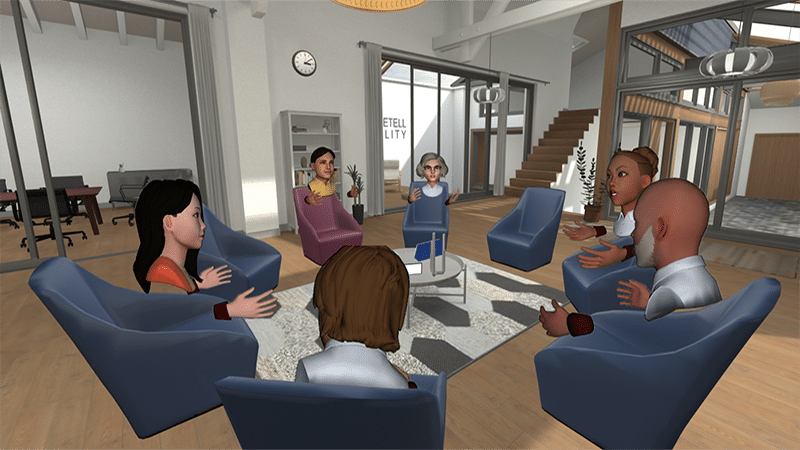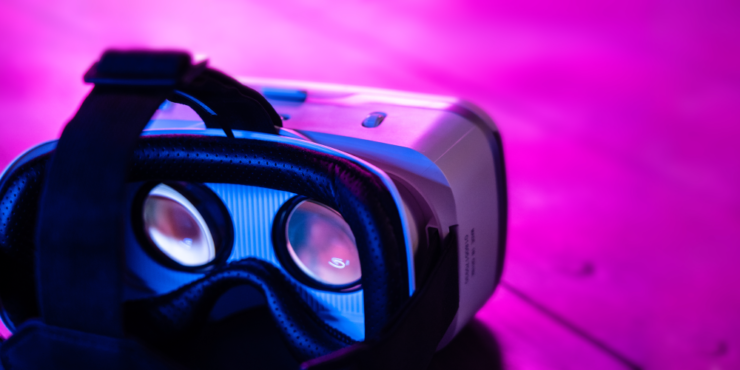
As general manager for Foretell Reality and VP product for parent, Glimpse Group (NASDAQ:VRAR), a company seeking to unlock the benefits of virtual and augmented reality, Dror Goldberg was introduced to VR in its early days while he was with Samsung as senior director of product management and planning. At the Consumer Electronics Show in 2015, he recalls being blown away by the impact of VR to play tricks on the brain, making him feel immersed in completely different settings. Later at Glimpse, he was introduced to the therapeutic potential of using VR as part of treatments for mental health disorders. In this interview with BioTuesdays, Mr. Goldberg discusses how VR reduces the barrier to engaging patients in mental health treatment and how VR can be used as a powerful tool to alleviate anxiety and depression.
How does VR relate to mental health treatment?
Although the public perception of therapy is better than ever before, there are still some barriers that prevent people from seeking help. Lingering social stigma around therapy; social anxiety concerning in-person therapy, especially group therapy; and the logistical challenge of attending in-person therapy are all still barriers to entry. Fortunately, virtual reality offers solutions for all of these. The anonymity and confidentiality which VR offers have been proven to ease one’s hesitation toward getting help, especially among newcomers to therapy who can more easily explore their options, like programs, therapists, and groups, in VR. Virtual avatars and digital environments also reduce the feeling of exposure for users, allowing them to share personal details more comfortably with their therapist and fellow users in a support group setting. Finally, VR helps solve a few shortcomings of remote therapy by recreating the lifelike, three-dimensional settings and interactivity of in-person therapy, making therapy a shared, immersive, and interactive experience. In short, VR helps transform people’s perception of therapy by making therapy more convenient, less intimidating, and ultimately more accessible for anyone seeking help. Once people feel more comfortable with receiving help in VR, they may also be inclined to try out in-person therapy.
How does VR compare to other remote communications technologies or face-to-face meetings?
While VR does not yet provide real physical touch, it allows for a level of 3D interaction that recreates the sensation of being physically present with others. All participants share the same virtual space, whether it’s around a campfire, by the beach, or sitting on the moon. Experiencing the same virtual environment together, exchanging thoughts, and pointing out elements surrounding them creates a shared experience, and thus a social bond, which partly makes up for the lack of actual physical touch. There are plenty of other elements that recreate the sense of physical presence too. Body tracking allows users to orient and position their avatars near one another. Participants can even give virtual hugs or high-fives to each other. Our built-in icebreaker games, such as passing a virtual object between users, offers a level of physicality unavailable to conventional remote therapy. In-person therapy and remote telemedicine therapy both have their pros and cons, and VR offers the best of both worlds: you reduce the logistical and social anxiety barriers to entry, compared with in-person, and increase the level of interactivity that is unavailable in remote therapy.

How do your clients in the mental health space use your VR platform?
One of our clients, North-Star Care, is a medical and behavioral year-long program providing next generation, comprehensive virtual alcohol rehab treatment at home. Using virtual reality, North-Star Care provides a unique offering with peer guide-led meetings that, unlike AA, are completely anonymous, for patients to receive group support. This innovative service enhances their completely private home treatment experience for patients suffering with alcohol use disorder.
Yale School of Medicine uses our platform to conduct remote support group sessions for adolescents and young adults with cancer. For this population, cancer diagnosis and subsequent treatment come during a vulnerable developmental stage, magnifying the feelings of isolation. Support groups help foster connections, but in-person support groups are difficult for patients to participate in due to immunosuppression, prolonged hospitalizations, and logistical constraints. VR has allowed for the creation of a therapist-curated reality to hold intimate support groups where patients feel at ease to open emotionally to each other from the comfort and safety of their homes.
Another example is Yale’s Pediatric Gender Program that uses the Foretell Reality platform to work with transgender and gender diverse youth where participants are invited to design their own VR avatars to allow them to present to the group in a form that is consistent with their gender identity.
What is Foretell Reality’s business model?
We license the use of our software platform to clients, but we are not in the hardware business. Essentially, the platform consists of tools for clinicians and professionals to conduct VR sessions. As a B2B start-up, we collect licensing fees based on the level of usage, but we are flexible working with clients. In the future, we plan to collect fees on additional features in the software environment.
How do you measure success adopting VR for mental health?
Currently, we measure success in terms of engagement, whether people keep attending sessions, how they communicate and their comfort level they report on the quality of interaction in a VR setting. We are adding additional metrics and analytical capabilities that will also correlate data that will be collected from additional non-VR sensors.
What are some hurdles to adoption?
VR has certainly developed in leaps and bounds over the past few years. Headsets are less burdensome and much cheaper than they used to be. The Covid pandemic has also helped in creating awareness to VR as a new way to communicate remotely. But there are a few hurdles before we can accomplish mass adoption in the healthcare industry. VR hardware is still not as common as smartphones, so we’re not quite where we need to be in terms of general availability. Not all VR therapies are reimbursable either, which prevent some people from pursuing it as a treatment option. There also needs to be further integration of VR with health care systems and greater awareness and understanding how this tool can benefit patients. This is changing rapidly, however. As telemedicine continues to grow in popularity and qualified therapists are more regularly reimbursed, VR therapy is increasingly integrated into the insurance programs that healthcare organizations offer. Naturally, like any new technology that brings real benefits to users, adoption and accessibility will grow over time.
What technology advancements are in the pipeline?
What we’re seeing with VR technology today is the beginning of that accelerated advancement. Tracking facial expressions and embedded eye movements will allow avatars to replicate user micro expressions, making interpersonal communication feel extremely lifelike. This serves VR therapy particularly well, in terms of building connections and empathy between users. Other technological developments like gloves, controllers, and accessories with more comprehensive haptic feedback for full-body tracking further the sense of realism, allowing users to feel more immersed and comfortable in these virtual environments. As augmented reality is introduced into the market, a link will be established between a virtual experience and reality. So, imagine a therapy session in the park with the therapist sitting next to you in augmented reality. This will literally allow a patient to escape to a new world where they feel safe and relaxed.
• • • • •
To connect with Foretell Reality or any of the other companies featured on BioTuesdays, send us an email at [email protected].






